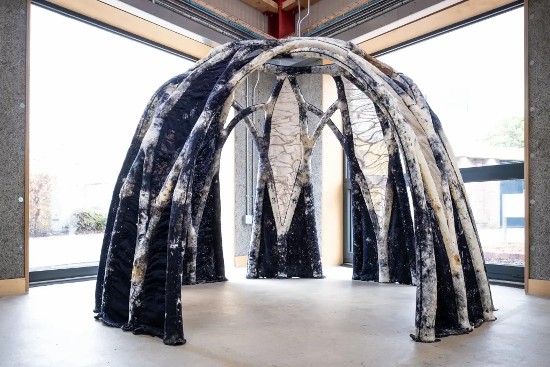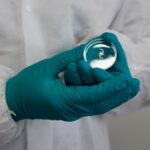The discipline called material science may help us to solve many of our 21st-century challenges. Here are three advancements that caught my eye in the last couple of weeks.
Material So Strong and Light It Could Clad Iron Man
When I saw a headline that said scientists had created a high-strength metamaterial five times lighter and four times tougher than steel, I immediately thought about how aluminum and titanium are used as steel substitutes today for their tensile strength and lightness.
But this new metamaterial isn’t a metal at all. It comes from research being done at the University of Connecticut, Columbia University and the Brookhaven National Laboratory. Made from DNA and glass its inventors claim the metamaterial to be the “strongest known.”
Iron and steel are strong but dense in weight. Aluminum is lighter but sacrifices some tensile strength to steel. Titanium, the lightest of the three gets used in specialized fabrication such as in aircraft. But this new metamaterial is said to beat all of them.
The researchers used a self-assembling structure built with DNA to create a framework and then coated it with a couple of hundred atoms-thick glass. The result is an air-filled glass structure five times lower in density than steel and four times stronger. The team sees the possibility of substituting other materials for glass coating and is now experimenting with carbide ceramics to invent more new metamaterials.
Oleg Gang, a nanomaterials scientist at Columbia University and the Brookhaven Center for Functional Nanomaterials, when asked about this new metamaterial, noted that if armour were made from this it would be perfect for Iron Man. He is a big fan of the movies.
Moisture Sucking Materials To Change Air Conditioners
Air conditioning (HVAC) in a warming world is no longer a luxury but rather a growing necessity. The International Energy Agency (IEA) has predicted HVAC will increase electricity demand by 4,000 Terawatt-hours (TwH) by 2050. That’s equal to the total electrical demand delivered over the U.S. grid today.
Typical HVAC systems use refrigerants and heat exchangers to cool inside air. The technology isn’t well suited to removing humidity which often makes the air feel much warmer. The result usually has people cranking down the thermostat to over-cool homes and buildings in the most humid months of the year.
But adding desiccants to HVAC could cut down on energy consumption dramatically. If you are unfamiliar with desiccants, they are those small packets and containers found in products like vitamin supplements, shoes, and other packaged goods to keep things dry. Typically, desiccants packets contain silica to absorb water vapour.
Now several companies are using desiccant materials in hybrid HVAC systems. One is Transaera, a Massachusetts Institute of Technology (MIT) spinout. Another is Blue Frontier, a Florida-based company. Transaera uses a novel sponge-like material to grab moisture from the air. Blue Frontier uses a concentrated salt solution liquid desiccant that pulls moisture from the air. Transaera uses the heat produced by running the hvAC to dry out and reuse the desiccant. Blue Frontier reduces power use by 90% by recharging and storing the desiccant when electricity is cheapest and then running the HVAC during peak periods when the air is most humid and hot. Runtime on storage is six hours. The company claims it reduces greenhouse gas (GHG) emissions from HVAC systems by 85% because it uses far less refrigerant.
So who knew that novel desiccants combined with HVAC could be an adaptation solution to rising atmospheric temperatures?
Concrete From Fungi For Eco-Friendly Structures
Can we grow concrete? Apparently, the answer is yes with scientists developing what they call “knitted moulds” to provide the formwork for a new concrete substitute called “mycocrete.” Research being done at Newcastle University in the United Kingdom is using mycelium, the stuff that makes up the root network of fungi like mushrooms and combining it with paper, glycerin, wool, sawdust, cellulose and xanthan gum to make a material that can be shaped in numerous ways. The myocrete is stronger and more versatile than current concrete.
The mycelium is harvested before it can turn into mushrooms. Using it to produce mycocrete which looks like a dense paste that can be squeezed into the moulds, it can produce a variety of novel structures like the one seen at the top of this posting.
A paper describing the material and the mycelium biofabrication process appeared recently in the journal, Frontiers in Bioengineering and Biotechnology.
















